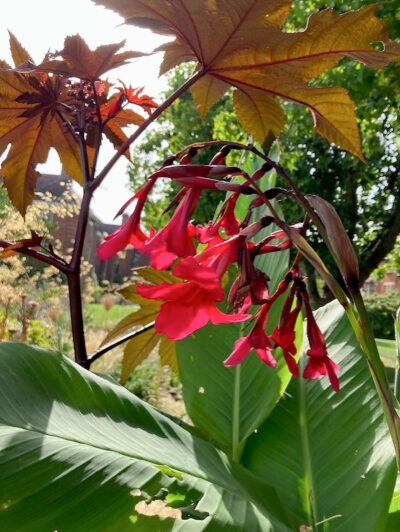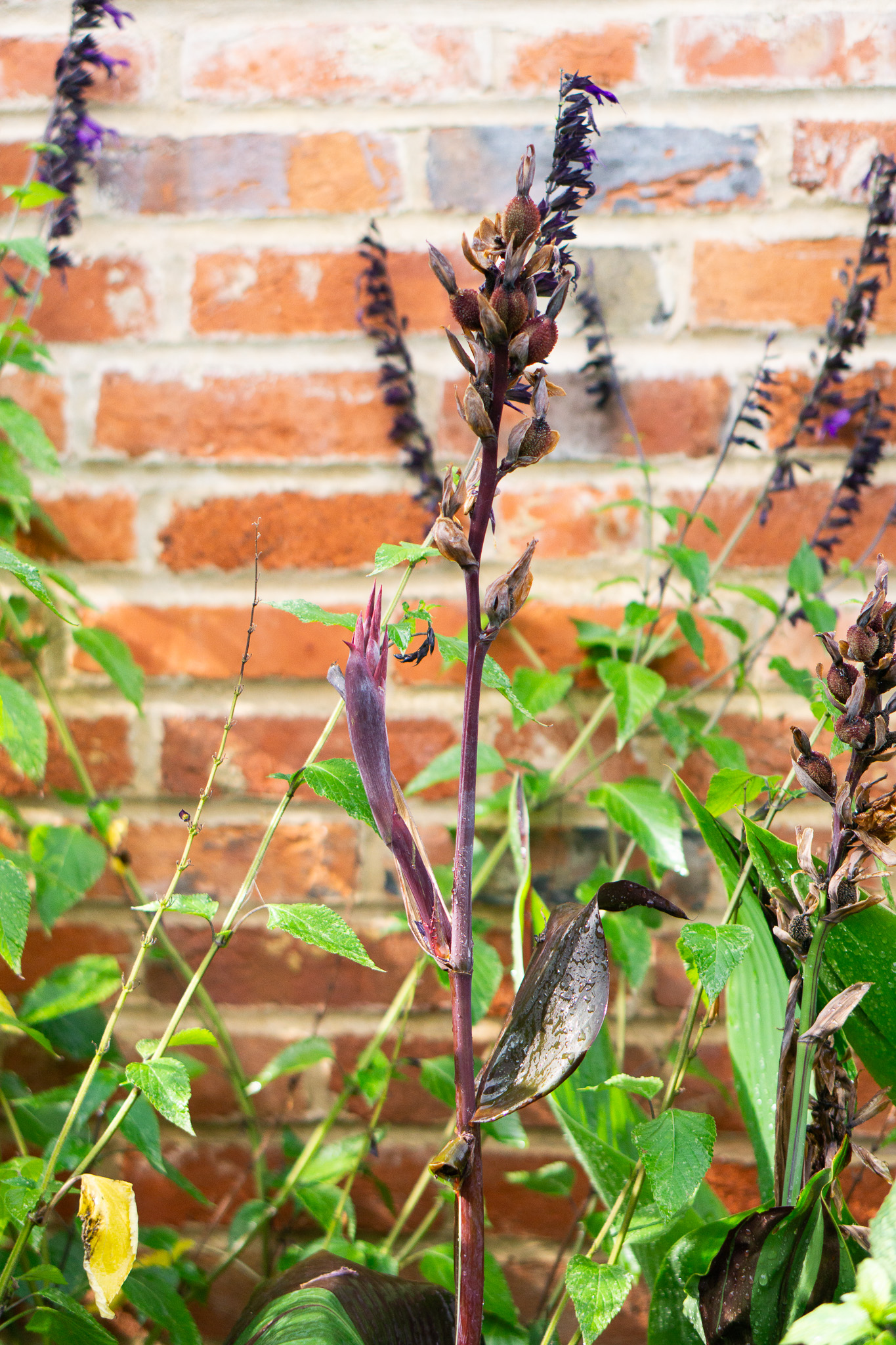Following on from July’s blog, we are once again looking at plants from further afield this month.
Specifically, we are looking at varieties of canna, those vibrant perennials which produce such bold leaves and showy flowers during the summer months.
I suspect gardeners are somewhat like medics in that, even if we didn’t learn it at school, our work requires us to pick up varying degrees of Latin. In this case, the name Canna indica might lead the average botanist (or doctor) to assume this beautiful strain comes from India. Incorrectly, as it turns out, for this variety actually originated in the American tropics and has been naturalising in Africa, India and Europe since the 1860s.
The reason Canna indica, and cannas in general, are so loved in the British garden is because we tend to have the summers (and perhaps now the winters) to give these plants the space, light and heat for them to do their thing. They tend to reach their best and most exuberant at approximately 2.5m – 3m. We haven’t quite managed those heights this year due to unfavourable weather patterns and the existing size of size of plant (remember, this is a brand new planting). Regardless, the size and vibrance of their leaves lend real exuberance and robustness to the borders at this time of year, as well as drama to the pots.
Here are a few examples:


Another beautiful variety we’re growing at Somerville is Canna ‘Cleopatra’. Not only is this absolute beauty aesthetically striking and exotic, it’s also a chimera. In this context, a chimera (sometimes known as an unstable hybrid) means that someone somewhere cross-pollinated two types of canna and then, rather than the two varieties genetically merging and creating a hybrid, the two different strains insisted on going it solo – hence the dramatic folia stripes as well as the slightly over the top flowers, the speckling, mottling and just completely different colours, yet all on the same plant. So, if only to allow you to use the word chimera correctly, do hunt this plant out in the Fellows’ Garden.

Canna Cleopatra – note how the combination of two strains has resulted in red and yellow blooms on the same plant.
Now let’s leave aside the botany for a moment, as we consider a little bit of folklore/history pertaining to this plant. One of its common names is Indian Shot. This appellation is supposed to hail from 19th century conflicts in India. The story goes that, when the soldiers ran out of shot, they were known to use the seeds of Canna indica as a substitute.
True or not, it has been tried and proven that Canna seeds can be fired at a target and then germinated: https://www.bbc.co.uk/programmes/p00p14q0.
There are many more interesting things I could write about this plant. But let’s keep this one short and sweet – a bit like our summer this year!
Check out this month’s gallery below:









